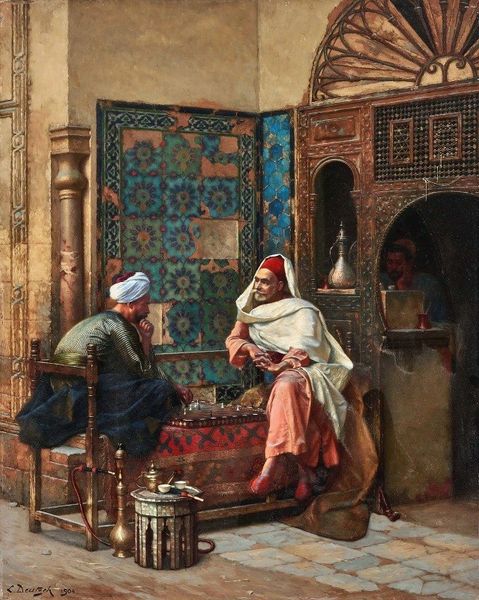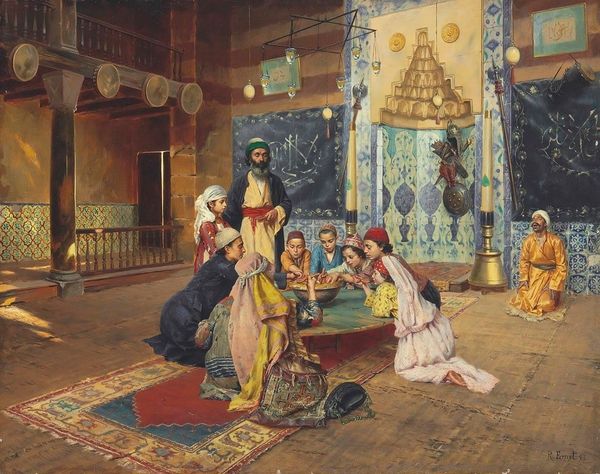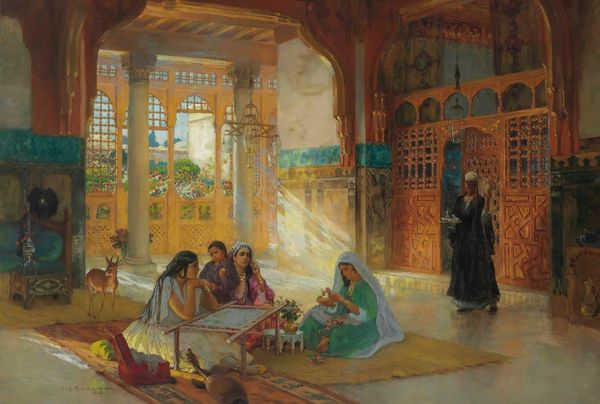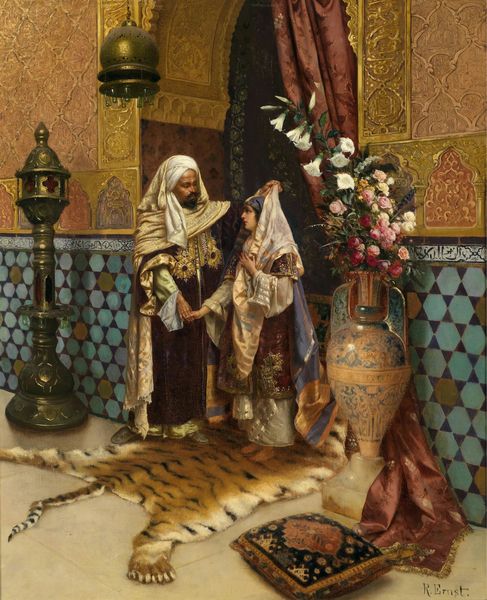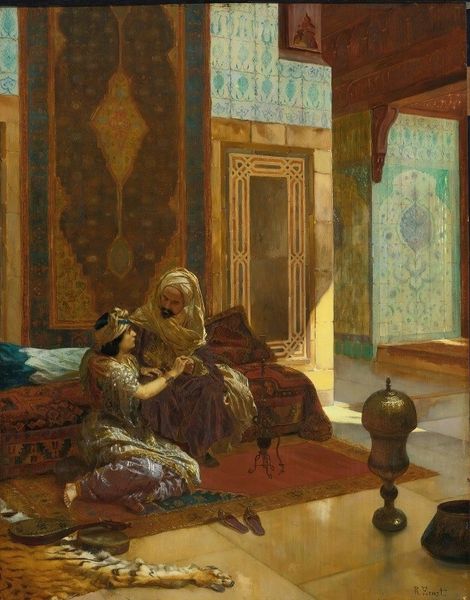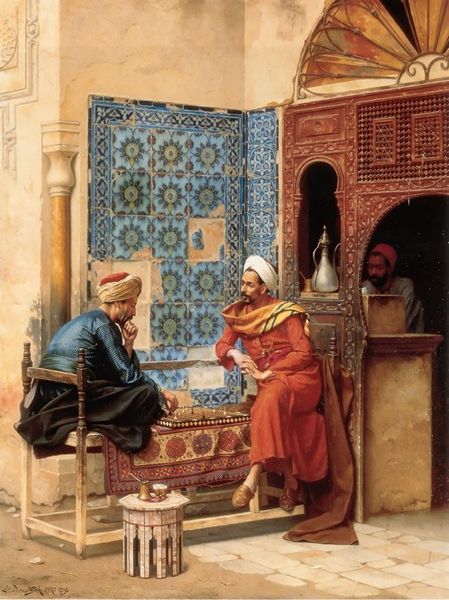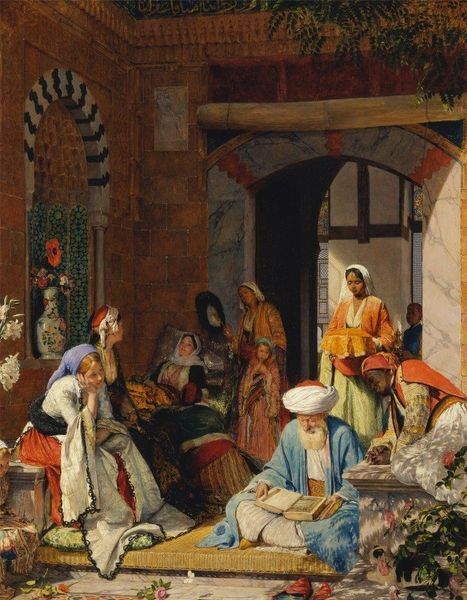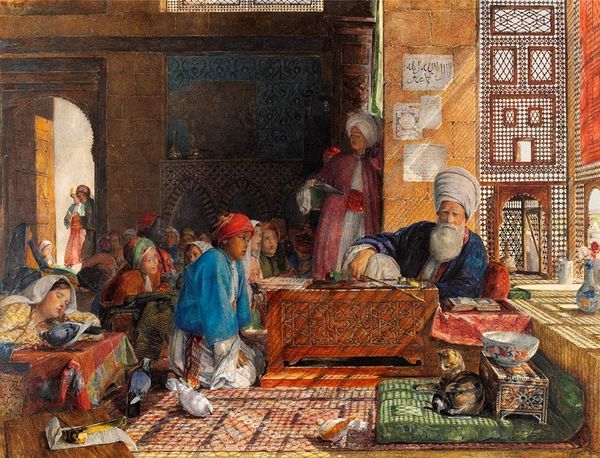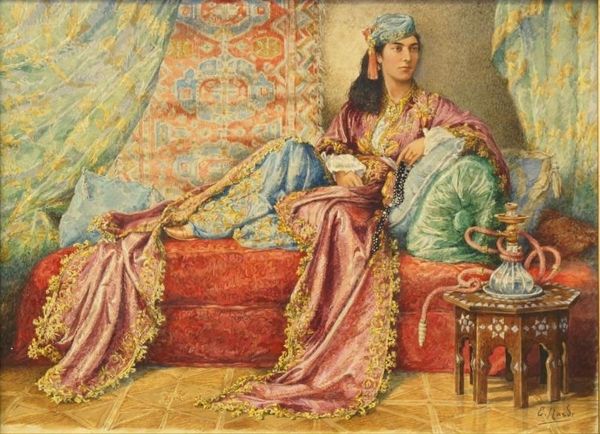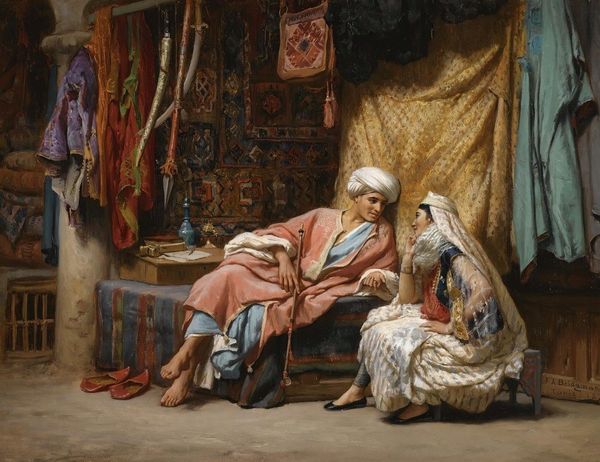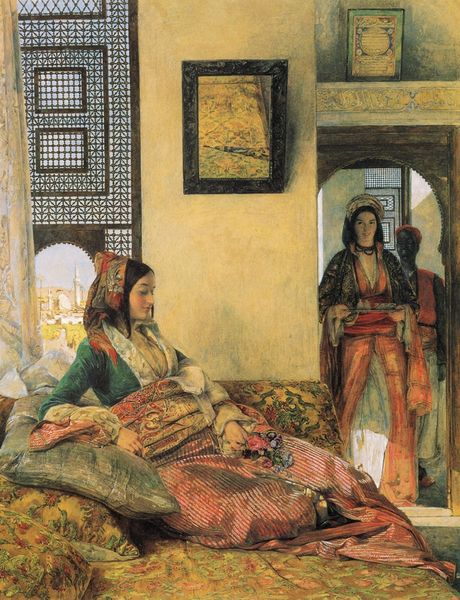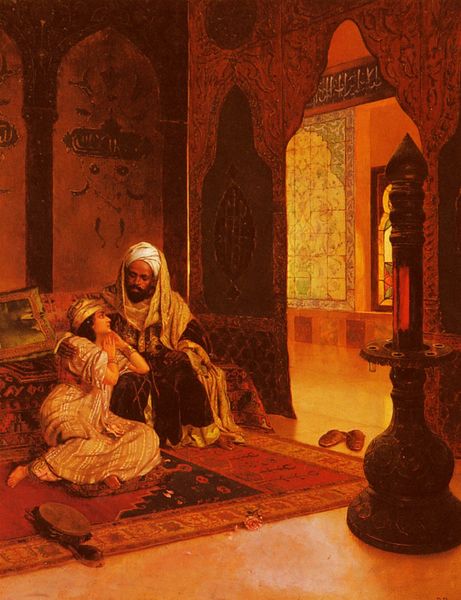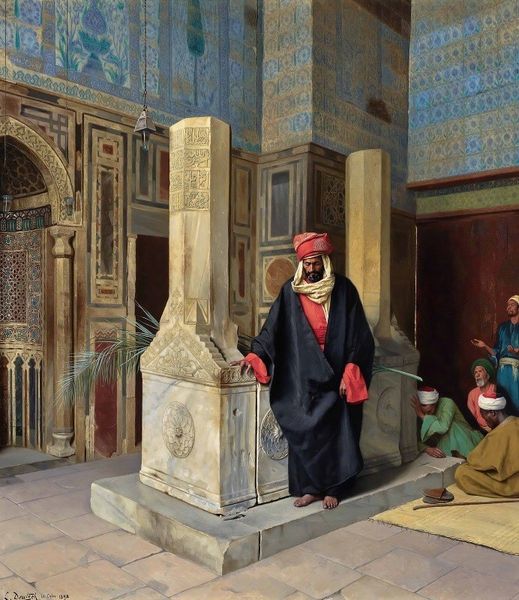
#
gouache
#
figurative
#
possibly oil pastel
#
handmade artwork painting
#
oil painting
#
underpainting
#
naive art
#
painting painterly
#
watercolour illustration
#
watercolor
#
warm toned green
Copyright: Public Domain: Artvee
Curator: Before us is "The Favourite," a figurative painting believed to be by Rudolf Ernst, although its precise date remains unknown. Editor: My first impression? It feels staged, almost like a theatrical tableau. There's an opulence in the details, but also a distance, a sense of observation rather than intimacy. Curator: The painting technique uses oil, watercolor and gouache. You see orientalist elements here in the costumes, architecture, and subject matter, invoking 19th-century European fantasies about the "Orient." Editor: Exactly. It’s important to recognize how these fantasies served a political purpose. What does it mean to depict women in such a posed manner, particularly within a colonial context? The standing figure is clearly of higher status than the kneeling woman holding the musical instrument. We see that difference represented formally in the work, the figure standing over the other kneeling below them. It gives an impression that it reinforces stereotypes of hierarchy and power dynamics. Curator: The light, color palettes, and details carry cultural significance. Note the flowers that could imply themes such as beauty, status, and impermanence; and the ornate jug suggesting something rare. These images would have been familiar to contemporary viewers of the artwork, thus creating a clear reference that they understood. It also draws visual parallels to early Renaissance altarpieces of kneeling supplicants at the feet of divine rulers. Editor: While appreciating the surface aesthetics and symbolism, we can consider the painting through the lenses of Orientalism and feminism. What assumptions does it make about the depicted women, their roles, their desires? Whose gaze is being privileged? We should explore beyond surface beauty to reveal those important intersections between representation, identity, and power. Curator: And what do you think this artist meant to communicate with such carefully arranged components? To invoke exotic beauty, luxury, reverence perhaps, or the simple indulgence in cultural stereotypes. Editor: Well, seeing it through that lens reveals not only artistic style but the insidious power of cultural narratives that continues to shape our world. I believe that critical assessment adds nuance. Curator: Indeed, every artwork has layers of meanings waiting to be uncovered.
Comments
No comments
Be the first to comment and join the conversation on the ultimate creative platform.
